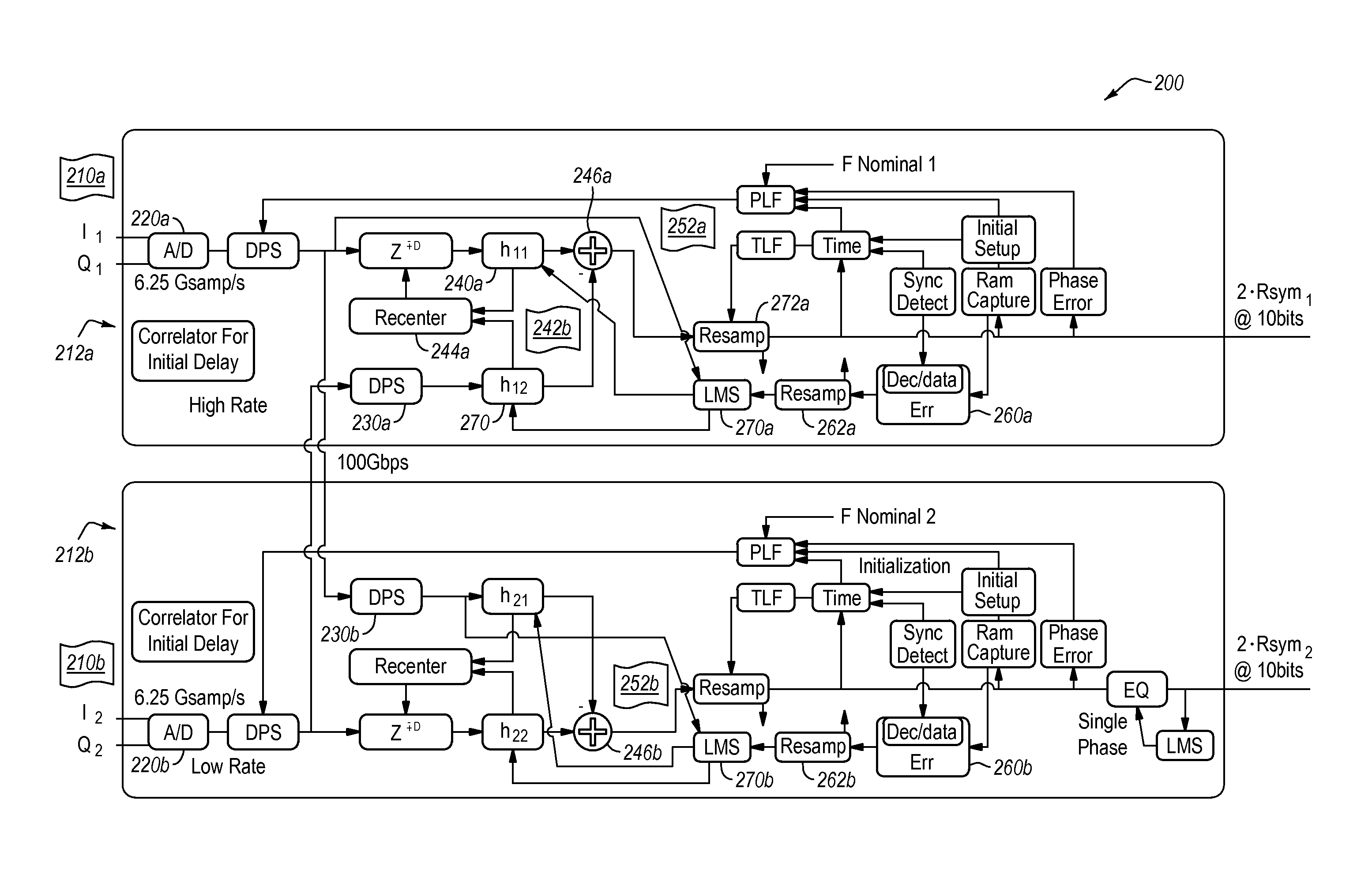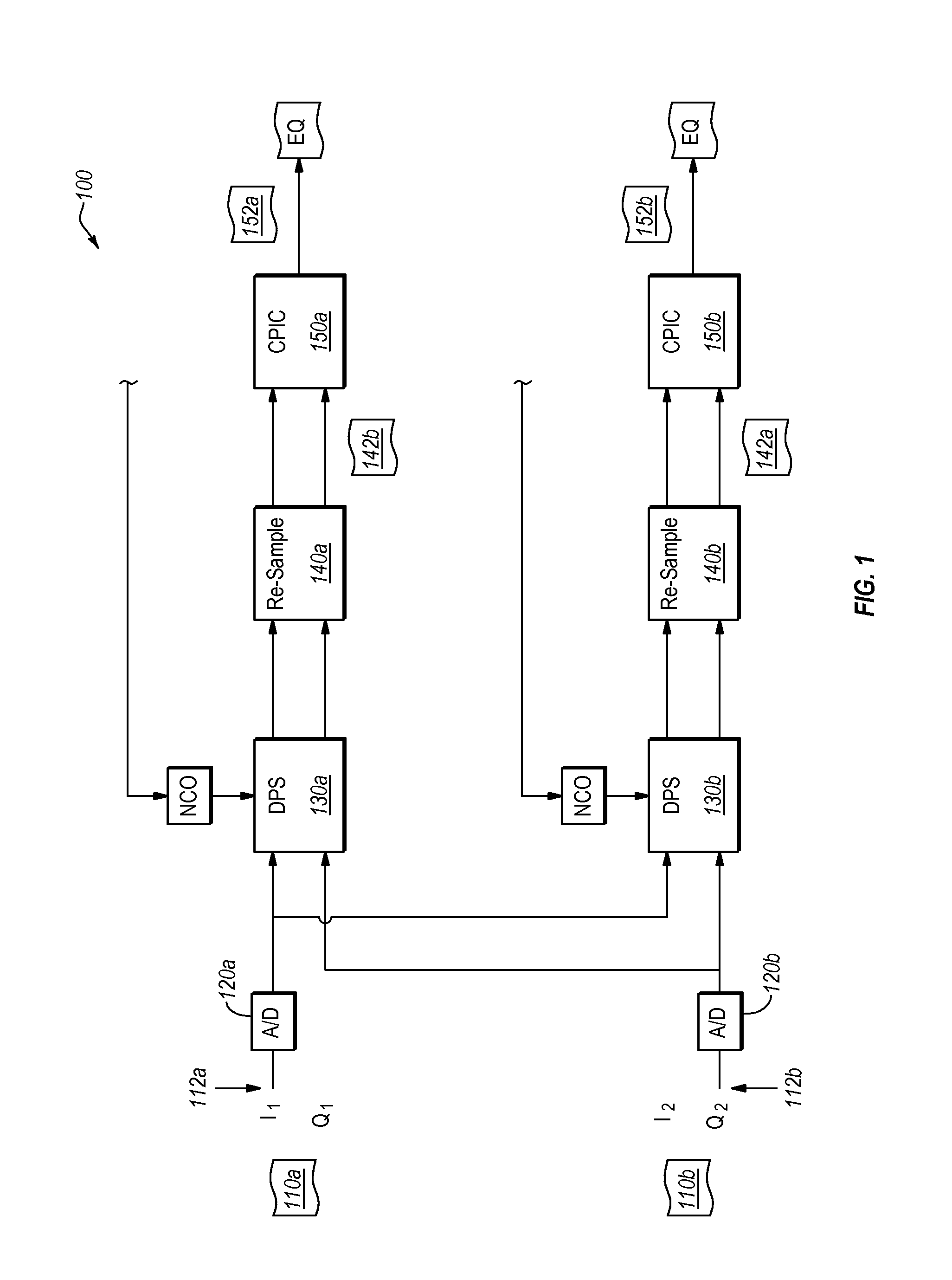Unequal rate interference cancellation
- Summary
- Abstract
- Description
- Claims
- Application Information
AI Technical Summary
Benefits of technology
Problems solved by technology
Method used
Image
Examples
Embodiment Construction
[0022]The present invention extends to systems, methods, and apparatus configured to remove co-channel interference from one or more received signals that comprise different symbol or chipping rates. In particular, implementations of the present invention comprise computer systems, methods, and computer-readable media for receiving one or more co-channel signals transmitted at different rates, identifying co-channel interference caused by at least one of the signals, and removing the identified co-channel interference from the other signal. As such, implementations of the present invention provide significant benefits within multiple digital communication fields, including communication fields that deal with cross-polarization interference, multi-directional signals, and other fields that may experience co-channel interference.
[0023]Accordingly, implementations of the present invention efficiently remove co-channel interference that is at a different symbol rate or chipping rate tha...
PUM
 Login to View More
Login to View More Abstract
Description
Claims
Application Information
 Login to View More
Login to View More - R&D
- Intellectual Property
- Life Sciences
- Materials
- Tech Scout
- Unparalleled Data Quality
- Higher Quality Content
- 60% Fewer Hallucinations
Browse by: Latest US Patents, China's latest patents, Technical Efficacy Thesaurus, Application Domain, Technology Topic, Popular Technical Reports.
© 2025 PatSnap. All rights reserved.Legal|Privacy policy|Modern Slavery Act Transparency Statement|Sitemap|About US| Contact US: help@patsnap.com



